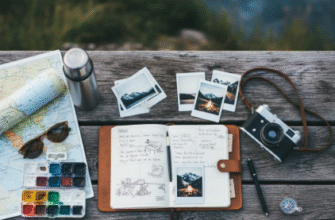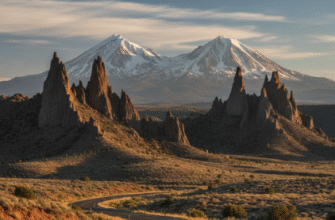I used to think you could hit all the major Western parks in two weeks if you really pushed it.
Turns out—and I learned this the hard way, somewhere between the South Rim and a gas station in Kanab that may or may not have had working restrooms—that the actual driving is the thing that breaks you. Not the hiking, not the crowds, not even the $35 entrance fees that add up faster than you’d expect. It’s the seven-hour stretches through Nevada where the landscape refuses to change and your podcast queue runs dry and you start questioning whether Zion was actually worth leaving at 5 a.m. I’ve done this route three times now, each iteration slightly less ambitious than the last, and I think I’ve finally figured out the rhythm that doesn’t leave you hating both nature and internal combustion engines by day nine. The key—and I’m serious about this—is accepting that you’re going to skip something big, something everyone says you can’t miss, and you’re going to be fine with that.
Here’s the thing: most people start in Vegas because flights are cheap and it feels centrally located. From there, Zion is a 2.5-hour shot northeast, and if you arrive mid-week in shoulder season (late April or early October), the shuttle system is actually manageable. Angel’s Landing gets all the Instagram attention, but the Observation Point trail—before the rockslide closed half of it, anyway—offered better views with maybe a third of the traffic. I guess it’s open again now via a longer route? The park service website was unclear last I checked.
The Long Stretch Through Utah’s Canyon Country That Definately Tests Your Patience
Bryce Canyon sits about 90 minutes from Zion, and this is where the itinerary logic starts to fray a bit. Everyone wants to see the hoodoos at sunrise, which means either camping at the rim (cold, even in summer) or staying in Tropic and driving up in the dark. The Navajo Loop is the classic route—drops you down among the formations, brings you back up wheezing—but honestly the best view might be from Inspiration Point around 7 a.m. when the light hits just right and you haven’t yet had enough coffee to function properly. From Bryce, you could push straight to Moab, but that’s five hours of mostly nothing. Capitol Reef is sort of on the way, sort of not, depending on how flexible your definition of “on the way” is. The orchards there are strange and wonderful—Mormon settlers planted them in the 1880s, give or take, and the Park Service still maintains them. You can pick fruit in season, which feels both anachronistic and slightly illegal even though it’s encouraged.
Wait—maybe I should mention that cell service dies completely through this section.
Moab and the Dual Park Problem That Nobody Warns You About Properly
Moab gives you Arches and Canyonlands, and the conventional wisdom says to do both, but Canyonlands is enormous and far-flung and requires choices. Island in the Sky is the accessible district, about 40 minutes from town, with overlooks that make you feel very small and slightly queasy if you have any issue with heights. The Needles district is farther, weirder, less crowded—I’ve seen maybe a dozen people on the entire Chesler Park loop, which took about six hours and destroyed my knees for the following three days. Arches is more compact, more famous, more everything. Delicate Arch at sunset is a mandatory pilgrimage apparently, though by the time you hike up there you’ll be sharing the moment with roughly 400 of your closest strangers. I preferred Devils Garden early morning, before the heat sets in and when the light makes the fins glow orange in a way that photographs never quite capture accurately.
Anyway, from Moab you’re looking at another big jump.
The Grand Canyon Approach Through Monument Valley If You Have the Extra Two Days
Monument Valley isn’t technically a national park—it’s Navajo Tribal Park, different jurisdiction, different fees—but the detour makes sense if you’re already committing to this much windshield time. The valley floor drive is rough, unpaved, hell on rental cars, absolutely worth it. The formations you’ve seen in every Western ever filmed look different in person, taller and stranger and more red than you’d think possible. From there, the South Rim is about three hours south, and you’ll arrive either numb to natural beauty or primed for one last big moment. I’ve had it go both ways. The Rim Trail stretches for miles—paved, accessible, crowded near the village, nearly empty if you walk far enough east toward the Watchtower. Sunrise at Mather Point is the cliché move, but Hopi Point at sunset might actually be better, or maybe I just had better weather that day. The Canyon doesn’t really photograph, doesn’t really describe, just sits there being absurdly large until your brain recalibrates scale itself. People cry sometimes, which I didn’t expect the first time I saw it happen.
The whole loop, if you don’t rush, takes about 12 to 14 days and covers roughly 1,400 miles, assuming you don’t add Yellowstone or the Tetons, which are a whole seperate northern tangent that deserves its own trip entirely.









